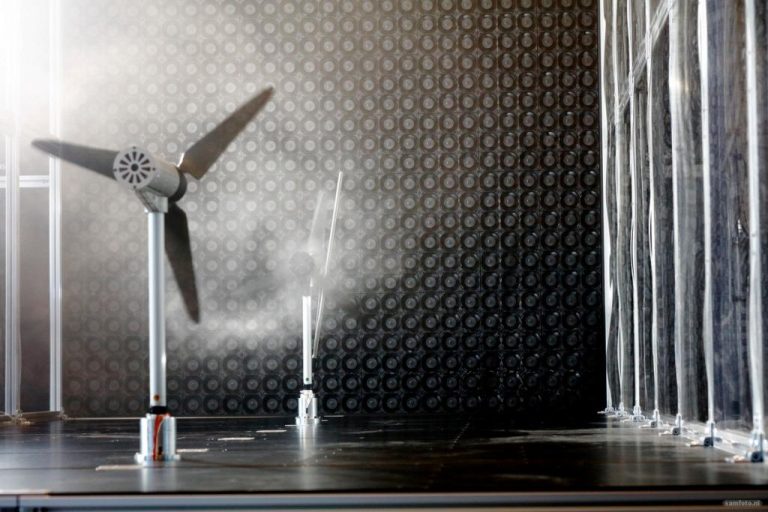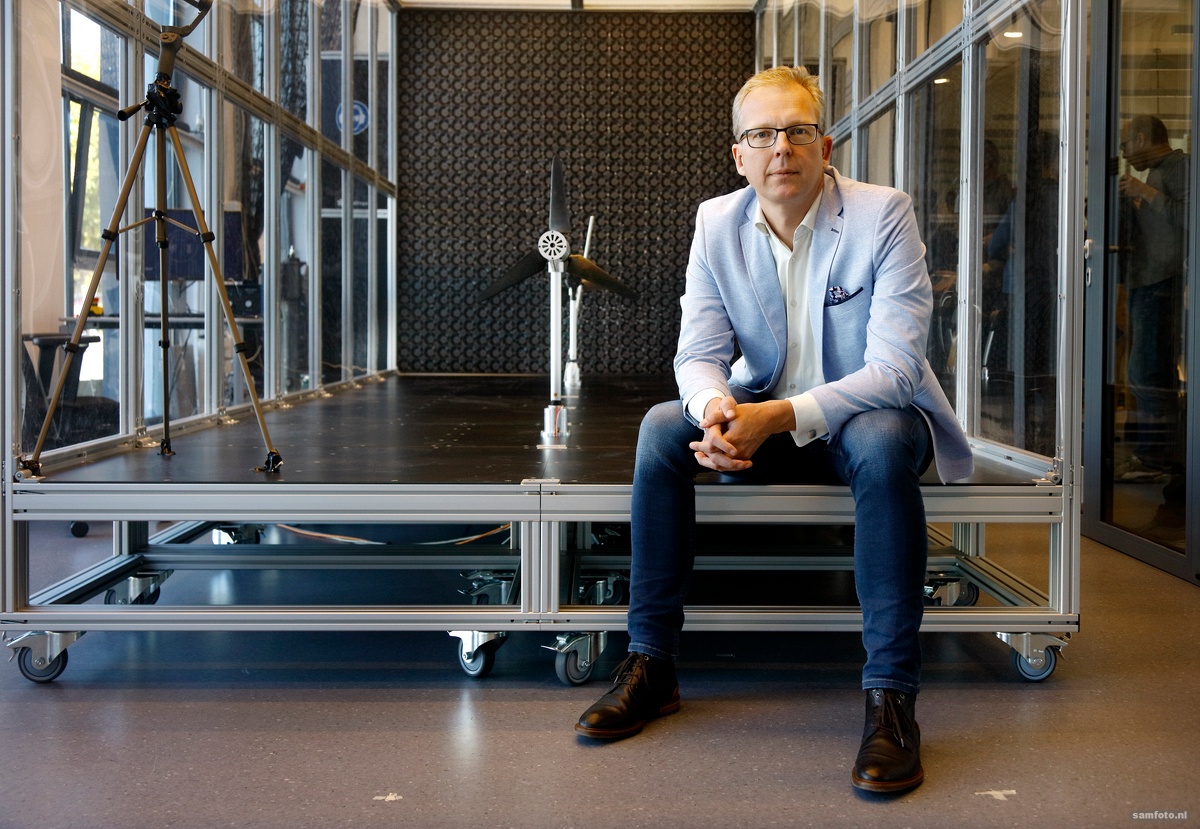The wind fields generated in the Wind AI Lab are almost real. During the opening, Jan-Willem van Wingerden demonstrated the possibilities of this new lab.
"Other wind labs keep the wind flow as uniform as possible, whereas we create turbulence," says Van Wingerden (Photo: Sam Rentmeester)
Setting up the Wind AI Lab took some doing. The noise level of the WindShape – a wind machine with as many as 1,500 fans – is comparable to that of a helicopter. So the specially installed partition wall of five centimetre thick glass between the machine and the workstations is not a superfluous luxury. The machine’s sky-high power consumption (128 amps) required a new connection and the weight required a spot right above a support beam in the floor. With that sorted out, it is now up to Jan-Willem van Wingerden, expert in measurement and control techniques in wind turbines at TU Delft, to demonstrate what the Wind AI Lab can do.
The individually controllable fans in the WindShape create wind fields with different speeds and directions. These non-uniform wind fields give a true picture of wind at sea as this is not constant. “Other wind labs keep the wind flow as uniform as possible, whereas we create turbulence,” Van Wingerden explains. The machine’s application is also unique. “Normally, drones are tested in this kind of wind tunnel. We misuse it to do wind energy research,” he says with a laugh.
Wake at sea
As soon as Van Wingerden switches on the wind machine on the official opening day of 18 October, two model turbines, set back to back, start spinning fiercely. Especially for the opening, Van Wingerden arranged a setup with smoke to make the wind patterns visible. Like dense fog, the smoke moves in a horizontal line through the front wind turbine towards the rear one. A monitor displays the energy output of the turbines in a graph. The rear turbine’s line lags considerably behind that of the front one. Why does the rear wind turbine generate less energy?
It is because the rear turbine is affected by the wake of the front one. The front wind turbine is full of wind and draws energy from it. The front wind turbine creates a wake behind it, an area where the wind speed is lower. “Cyclists like to ride in the wake of others as they are less affected by the wind,” says Van Wingerden. “In the case of wind farms, this has a negative effect.”
“Our wind turbines also suffer from wake,” confirms Robert Portier, spokesman for energy supplier Vattenfall. “If the distance between wind turbines at sea could be reduced without them being affected by each other’s wake, that would be optimal. Then we would need less space for the same number of wind turbines, which is an advantage in an increasingly crowded sea full of wind farms, fishermen and shipping lanes.”
Wind helix
One way to reduce the negative effect of wake is helix technology. Van Wingerden slightly tilts the blades of the front turbine and switches the fans back on. A distinct spiral shape now appears in the smoke behind the first turbine. “The spiral breaks up the wake, making it shorter,” says Van Wingerden.
Because the angle of the blades of the front turbine is small, they catch less wind. So the front turbine may generate less energy, but the wind turbine behind it is less affected by its wake. If applied to an entire wind farm, this technique would increase the overall energy yield, explains Van Wingerden. The helix technology will be tested at full scale at the Hollandse Kust Noord wind farm, which is due for completion in 2023.
With the opening behind him, Van Wingerden is proud. “The Wind AI Lab is a TU Delft innovation. And the fact that we will soon be able to test the helix technology in a large wind farm is of course fantastic!”


Like dense fog, the smoke moves in a horizontal line through the front wind turbine towards the rear one. (Photo: Sam Rentmeester)
Carmen Geukers / Freelance wetenschapsjournalist



Comments are closed.